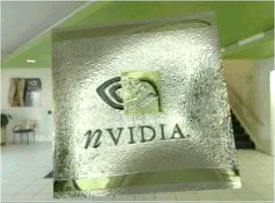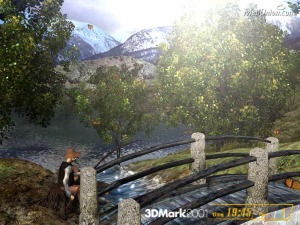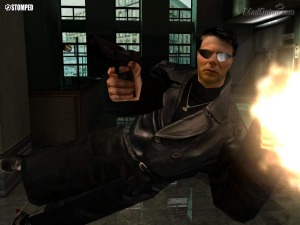
 |

|
| ActiveWin: Reviews | Active Network | New Reviews | Old Reviews | Interviews |Mailing List | Forums |
|
|
|
|
|
DirectX |
|
ActiveMac |
|
Downloads |
|
Forums |
|
Interviews |
|
News |
|
MS Games & Hardware |
|
Reviews |
|
Support Center |
|
Windows 2000 |
|
Windows Me |
|
Windows Server 2003 |
|
Windows Vista |
|
Windows XP |
|
|
|
|
|
|
|
News Centers |
|
Windows/Microsoft |
|
DVD |
|
Apple/Mac |
|
Xbox |
|
News Search |
|
|
|
|
|
|
|
ActiveXBox |
|
Xbox News |
|
Box Shots |
|
Inside The Xbox |
|
Released Titles |
|
Announced Titles |
|
Screenshots/Videos |
|
History Of The Xbox |
|
Links |
|
Forum |
|
FAQ |
|
|
|
|
|
|
|
Windows XP |
|
Introduction |
|
System Requirements |
|
Home Features |
|
Pro Features |
|
Upgrade Checklists |
|
History |
|
FAQ |
|
Links |
|
TopTechTips |
|
|
|
|
|
|
|
FAQ's |
|
Windows Vista |
|
Windows 98/98 SE |
|
Windows 2000 |
|
Windows Me |
|
Windows Server 2002 |
|
Windows "Whistler" XP |
|
Windows CE |
|
Internet Explorer 6 |
|
Internet Explorer 5 |
|
Xbox |
|
Xbox 360 |
|
DirectX |
|
DVD's |
|
|
|
|
|
|
|
TopTechTips |
|
Registry Tips |
|
Windows 95/98 |
|
Windows 2000 |
|
Internet Explorer 5 |
|
Program Tips |
|
Easter Eggs |
|
Hardware |
|
DVD |
|
|
|
|
|
|
|
ActiveDVD |
|
DVD News |
|
DVD Forum |
|
Glossary |
|
Tips |
|
Articles |
|
Reviews |
|
News Archive |
|
Links |
|
Drivers |
|
|
|
|
|
|
|
Latest Reviews |
|
Xbox/Games |
|
Fallout 3 |
|
|
|
Applications |
|
Windows Server 2008 R2 |
|
Windows 7 |
|
|
|
Hardware |
|
iPod Touch 32GB |
|
|
|
|
|
|
|
Latest Interviews |
|
Steve Ballmer |
|
Jim Allchin |
|
|
|
|
|
|
|
Site News/Info |
|
About This Site |
|
Affiliates |
|
Contact Us |
|
Default Home Page |
|
Link To Us |
|
Links |
|
News Archive |
|
Site Search |
|
Awards |
|
|
|
|
|
|
|
Credits |


|
Product: 3D Prophet III Titanium 500 |
Sprite Point
|
Table Of Contents |
 The
GeForce 3 Ti 500 GPU has been designed to meet all the Microsoft DirectX 8.0
specifications. As a result it supports sprite point. Generally particles
are polygons based on two joined triangles that create a 4 vertices
rectangle. Using the Sprite Point technology only one vertex will be used
per particle so you get more particles on screen with no performance loss.
Oh yeah for those of you who donít know what particles are used for: we can
say theyíre very useful to create fireworks, blasts and other fountain
animations.
The
GeForce 3 Ti 500 GPU has been designed to meet all the Microsoft DirectX 8.0
specifications. As a result it supports sprite point. Generally particles
are polygons based on two joined triangles that create a 4 vertices
rectangle. Using the Sprite Point technology only one vertex will be used
per particle so you get more particles on screen with no performance loss.
Oh yeah for those of you who donít know what particles are used for: we can
say theyíre very useful to create fireworks, blasts and other fountain
animations.
Newly GeForce 3 Titanium 500 Enabled Features
The following features are already present in the GeForce 3 GPU. However until the release of the Detonator XP drivers, these features were disabled. So now that the Detonator XP drivers are out letís take a look at this feature common to the GeForce 3 and GeForce 3 Ti 500 cards:
3D Textures
NVIDIA is definitely not lacking in terms of features! Like the GeForce 3, the GeForce 3 Ti 500 supports 3D textures. Using volumetric 3D textures change the way graphic designers create scenes. Itís now possible to apply a 3D texture to part of a character: for such a depth the corresponding texture will be a cloth texture, for another depth it may be a skin texture and for the last depth it can be a texture representing human flesh. But once again thereís a problem! 3D textures are enormous! A simple 256x256x256 3D texture would fill up the whole 64 MB of memory the GeForce 3 Ti 500 offers. Thankfully the GeForce 3 Ti 500 comes with the DirectX 8.0 VTC (Volume texture compression) feature that will compress 3D textures so they use less memory space. The compression is done with a ratio of 4/1 or 8/1 so the size of our 256x256x256 3D texture was reduced to Ďonlyí 8 MB. If the VTC is interesting itís clear that the quality will suffer from this high compression.

The 3D textures will let game developers create new fascinating scenes with volumetric fog effects, life-like explosion or plasma effects and much more. The ability of the GeForce 3 Ti 500 to combine 3D textures and lighting effects is another step to approach reality since objects using at the same time a 3D texture and a lighting effect will seem alive or simply real.
Mip-Mapping
Game developers can face distortion problems when they apply a cubical texture to a spherical object. Indeed in that case the object shown by the screen will be distorted. Thatís why, the GeForce 3 Ti 500 offers the mip-mapping feature to correct the behavior described above. The combination of the 3D textures and the mip-mapping features leads to a better management of the cache memory since the mip-mapping will ensure the cache isnít clogged up with useless references to invalid texels.
Shadow Buffers
Todayís games use a lot of lighting and shadowing effects that are really complex to render. In order to simplify the handling of those effects and boost game performance the GeForce 3 Ti 500 includes a new technology named Shadow Buffers. The Shadow Buffer technology elaborates a Shadow Map of the objects that will be lightened during a scene. Since only one reference exists for a lighted point (with XY coordinates), it induces many shadowed points so drawing a map of light points speeds up the rendering process. To create the Shadow Map the GPU will operate a rendering of the scene from the point of the light source as if the eye of the spectator was in front of the scene. The Z values will be stocked during the rendering in the Shadow Buffers then the smallest Z-values will be kept to ensure that the pixels contained in the Shadow Buffers correspond to the nearest objects from the light source. Once generated, the map will be stored in the Shadow Buffer unit of the GeForce 3 Ti 500 GPU. Using this process can refine shadows with a 256 level shading depth and can also be used as Self-shadow so objects reflect on themselves.
DVD
Well thereís nothing special to say here except that the DVD support brought by the Geforce 3 Ti 500 chip is not worthy of such a graphics card since thereís no real hardware decompression. The same old Motion Compensation technology introduced by the GeForce 256 is still here and requires your computer to be at least a 400 MHz. I regret to see that NVIDIA didnít make any efforts on this point since ATI Radeon graphics cards (as well as old ATI 128) come with a real MPEG 2 decompression engine. Even on fast computers a hardware MPEG 2 decoder clearly enhances the whole fluidity of the video avoiding any glitches, freezes, etc. Hopefully to remedy the situation, Hercules has bundled with the 3D Prophet III Titanium 500 the release 3.0 of the outstanding PowerDVD software so you can view DVDs anyway (however we'd have prefer Hercules to bundle the latest PowerDVD XP 4.0 with the card).
![]()
Cyberlink PowerDVD 3.0
Pentium 4 Optimization
 NVIDIA
has worked closely with Intel to make sure its latest baby takes advantage
of all the new features brought by the fastest Intel processor. The Pentium
4 processor integrates the new Intel SSE2 instruction set including 144 new
instructions for 128-bit Single Instruction Multiple Data (SIMD) integer
arithmetic and 128-bit SIMD double-precision floating point. These new
instructions are intended to accelerate a broad range of applications
including 3D visualizations. The GeForce 3 Ti 500 GPU and especially its
drivers take advantage of these new instructions and other features a
Pentium 4 based system can offer like the Advanced Transfer Cache for higher
data throughput, the famous Intel NetBus 400 MHz system bus and the Rapid
Execution Engine for higher execution throughput. The combination of Intel
Pentium 4 processor and NVIDIA GeForce 3 Ti 500 technologies promises to
inspire new levels of visual excitement from application developers.
NVIDIA
has worked closely with Intel to make sure its latest baby takes advantage
of all the new features brought by the fastest Intel processor. The Pentium
4 processor integrates the new Intel SSE2 instruction set including 144 new
instructions for 128-bit Single Instruction Multiple Data (SIMD) integer
arithmetic and 128-bit SIMD double-precision floating point. These new
instructions are intended to accelerate a broad range of applications
including 3D visualizations. The GeForce 3 Ti 500 GPU and especially its
drivers take advantage of these new instructions and other features a
Pentium 4 based system can offer like the Advanced Transfer Cache for higher
data throughput, the famous Intel NetBus 400 MHz system bus and the Rapid
Execution Engine for higher execution throughput. The combination of Intel
Pentium 4 processor and NVIDIA GeForce 3 Ti 500 technologies promises to
inspire new levels of visual excitement from application developers.
3D Mark 2001
Below are two shots extracted from 3D Mark 2001 demonstrating how the new nFinite FX engine, when it's correctly exploited by games, can be ultra-realistic. Look how the nature scene seems real, admire the high level of details, in one word: enjoy!





